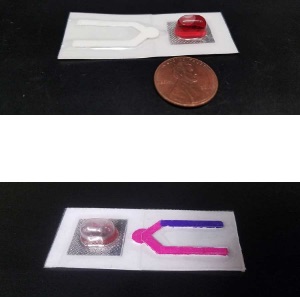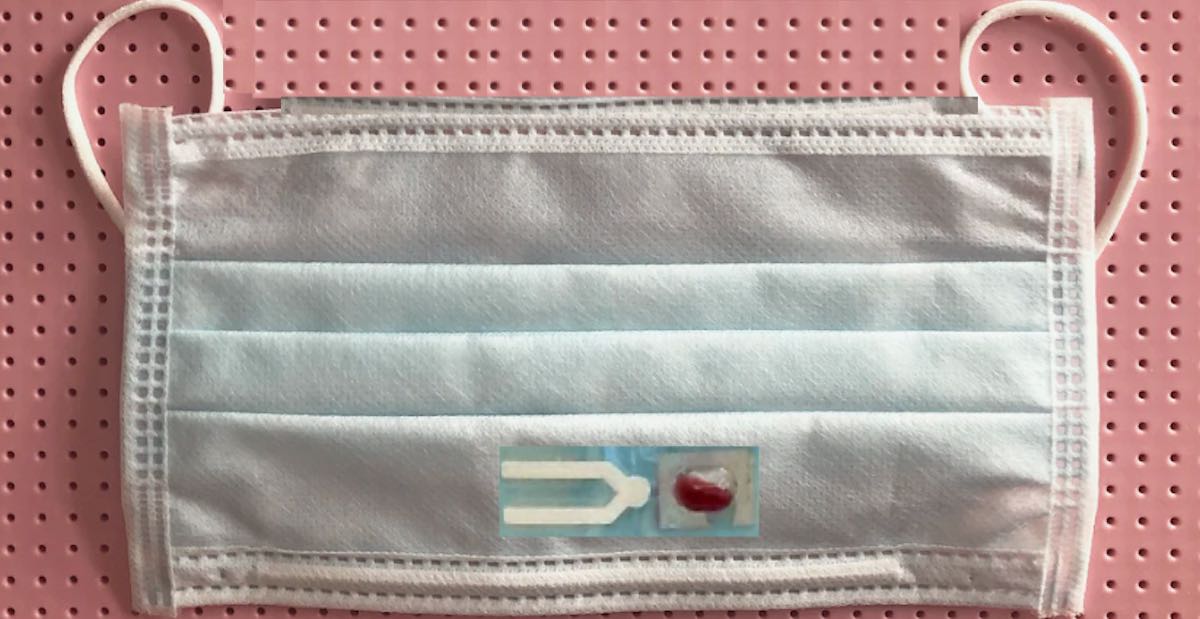Similar to a classic pregnancy test, a color-changing strip may, in the future, be mounted on face masks to detect the presence of COVID-19 in the air you breathed that day, allowing everyone to self-monitor the environments they pass through.
The project was launched by nanoengineers at UC San Diego with a $1.3 million grant from the NIH’s Rapid Acceleration of Diagnostics Radical (RADx) program.
The scientists created a small test kit to attach to the front of any mask, which can be mass produced at a cost of about 3 cents per kit.
After breathing through the mask for 4-5 hours, enough particles would be available to determine if you came in contact with the virus throughout the duration, or indeed if you perhaps have contracted it.
“In many ways, masks are the perfect ‘wearable’ sensor for our current world,” said Jesse Jokerst, professor of nanoengineering at the California university and project lead. “We’re taking what many people are already wearing and repurposing them, so we can quickly and easily identify new infections and protect vulnerable communities.”
To detect the virus, the wearer would crack a small blister pack that would immediately coat the test kit in fluid which would indicate the presence of proteases—protein-cleaving molecules produced from the coronavirus.
RELATED: Same Technology Behind Pfizer COVID-19 Vaccine is Leading Researchers to Possible MS Breakthrough
The grant program from the NIH totals $107 million and is being handed out to 49 projects at 43 institutions looking for “non-traditional viral screening approaches, such as biological or physiological markers, new analytical platforms with novel chemistries or engineering, rapid detection strategies, point-of-care devices, and home-based testing technologies.”

An advancement for the future
Despite the fact that the test strip turns blue or red, Jokerst said the product would more represent a smoke detector in function.
“Think of this as a surveillance approach, similar to having a smoke detector in your house,” he said. “This would just sit in the background every day and if it gets triggered, then you know there’s a problem and that’s when you would look into it with more sophisticated testing.”
Perfect for prisons, homeless shelters, nursing homes, dialysis clinics, or other areas where people must stay in quite close proximity, the kits could prevent outbreaks from becoming epidemics, and while Jesse understands that by the time his idea is mass-produced, which might not even come this year, the vaccination program might have COVID-19 under control.
But, his test also turns red for the original SARS virus from 2003, as well as MERS, which means he thinks they could be utilized—as a rapid and quickly-deployable weapon—for future pandemics originating form coronaviruses
“To solve a problem as complicated as COVID-19, we need ideas, tools, and technologies that challenge the way we think about pandemic control,” said NIH Director Francis S. Collins, M.D., Ph.D., in a statement.
CHECK OUT: New Zealand Buys Enough COVID Vaccine for its Pacific Islander Neighbors
“These awards from the RADx-rad program provide superb examples of outside-the-box concepts that will help us overcome this pandemic and give us a cadre of devices and tactics to confront future outbreaks.”
SPREAD the News to People in Search of Positive Solutions on Social Media…





















Wow! This is great.
Now, if I only wore a mask.
No, I’m not gonna wear a mask and put my health in jeopardy, I’ll risk breathing fresh air.